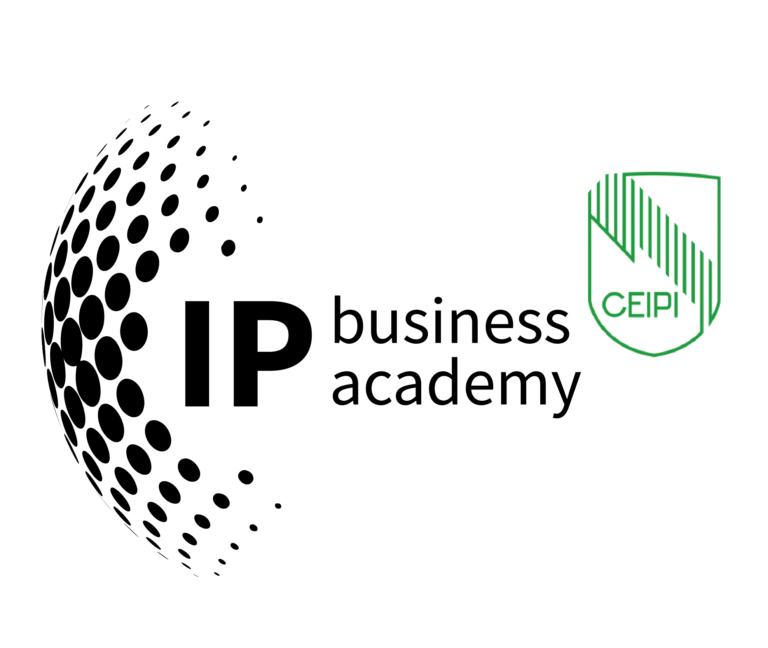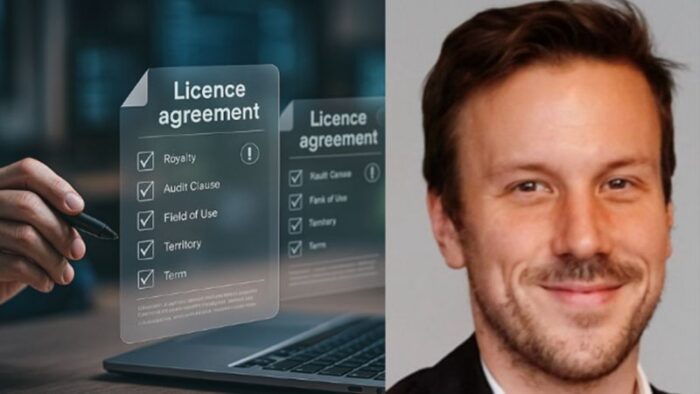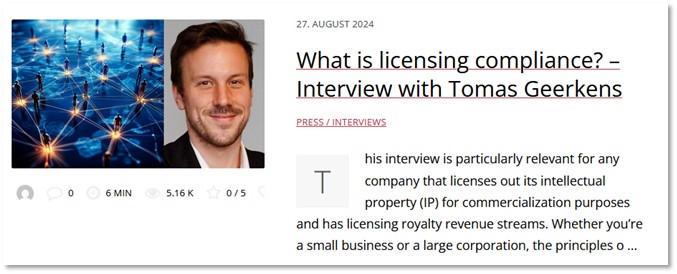Tomas Geerkens (Connor) on IPBA Connect: Turning Licensing Compliance Expertise into Measurable Business Development
How does a specialist from a service provider use the IPBA Connect platform to build demand and convert it into engagements? Tomas Geerkens, Director for Royalty at Connor, offers a sharp answer: package deep licensing-compliance know-how into clear, repeatable formats across IPBA channels and the IP Business Academy and map each format to a concrete step on the client journey—from awareness to qualified conversation to scoped project. Geerkens’ case is a blueprint for IP-adjacent service companies (audit, analytics, advisory) who want visibility and reliable conversion, not just reach.
__________________________________________________________________________
 “With my live interviews about licence compliance on LinkedIn and my expert page on the digital IP lexicon 🔗dIPlex, I was able to reach new target groups for my services and share my expertise. Using these fast and direct channels enabled a new way of addressing current topics in compliance and responding quickly to feedback and trends.” Tomas Geerkens
“With my live interviews about licence compliance on LinkedIn and my expert page on the digital IP lexicon 🔗dIPlex, I was able to reach new target groups for my services and share my expertise. Using these fast and direct channels enabled a new way of addressing current topics in compliance and responding quickly to feedback and trends.” Tomas Geerkens
__________________________________________________________________________
Personal Branding / Expert Branding
 Geerkens positions himself narrowly and credibly: licensing compliance controlling (royalties, audits, program design). That focus is consistent across his interview on the 📝IP Business Academy Blog, his 🔗dIPlex deep-dive series controlling license contract compliance, and his appearance on the 🎧IP Management Voice podcast in episode #12 about licensing compliance controlling. Each touchpoint reinforces the same promise: reduce revenue leakage, reduce friction with licensees, and improve governance. Consistency across formats is what turns a profile into a brand.
Geerkens positions himself narrowly and credibly: licensing compliance controlling (royalties, audits, program design). That focus is consistent across his interview on the 📝IP Business Academy Blog, his 🔗dIPlex deep-dive series controlling license contract compliance, and his appearance on the 🎧IP Management Voice podcast in episode #12 about licensing compliance controlling. Each touchpoint reinforces the same promise: reduce revenue leakage, reduce friction with licensees, and improve governance. Consistency across formats is what turns a profile into a brand.
On 🔗dIPlex, Geerkens is credited as Director, CONNOR—a subtle but important anchor that ties his expert brand to the corporate brand without diluting the personal signal. The pages read like a modular syllabus: overview, key components, pitfalls, best practices, and architecture building blocks. This editorial structure communicates mastery and makes his expertise immediately reusable inside client organizations.
Digital Visibility / Positioning
Visibility is built on named assets that answer specific stakeholder questions:
- “What is licensing compliance?” — Interview article (context, benefits, metrics).
- “How do we set it up?” — Key components & building blocks.
- “Where do programs fail?” — Common pitfalls.
- “What does good look like?” — Best practices + strategic white paper.
This portfolio solves discovery and comparison in one go: a prospective licensor who lands on any asset can navigate to the next logical question without leaving the IP Business Academy ecosystem.
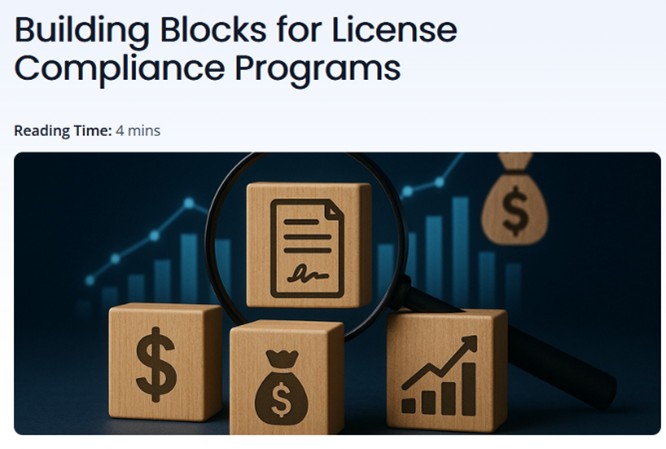 Crucially, the white-paper angle (“Strategic Compliance: The New Growth Lever”) elevates compliance from a cost topic to a growth narrative—exactly the reframing that senior executives respond to.
Crucially, the white-paper angle (“Strategic Compliance: The New Growth Lever”) elevates compliance from a cost topic to a growth narrative—exactly the reframing that senior executives respond to.
Digital Marketing
The campaign mixes three content types:
- Educational long-form (dIPlex chapters + interview): establishes authority and creates SEO-friendly landing pages for internal sharing among legal/finance teams.
- Conversation media (podcast episode #12 and IP Business Talks recordings): lowers the barrier to first contact; prospects can “meet” the expert asynchronously and hear how he reasons through real-world issues.
- Newsletter & round-up mentions (🎯IP Management Pulse): social proof via curation; highlights Geerkens’ LinkedIn analysis and links it back to the Academy’s audience.
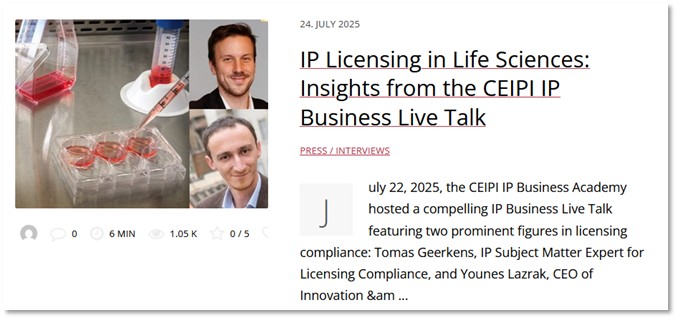 Outside the IPBA Connect platform and the IP Bussines Academy, third-party publications (e.g., IAM – “Dispelling myths and avoiding risks…”) extend reach beyond the IPBA sphere and validate expertise in an additional venue—useful when procurement checks for independent references.
Outside the IPBA Connect platform and the IP Bussines Academy, third-party publications (e.g., IAM – “Dispelling myths and avoiding risks…”) extend reach beyond the IPBA sphere and validate expertise in an additional venue—useful when procurement checks for independent references.
LinkedIn is the rhythm section of the program. The IPBA Connect platform and the IP Business Academy amplifies Geerkens’ posts via newsletter mentions and Live Talks; those posts in turn point back to podcast episodes, interviews, and the dIPlex series. This cross-pollination keeps a cohesive story in the feed without repetition. Evidence of this orchestration shows up in Pulse #32 (“Deepening collaboration by licensing audits”) and in the Academy’s interview post promoted https://ipbusinessacademy.org/ip-in-the-intangible-economy-ip-management-pulse-32 on LinkedIn.
For service providers like Connor, LinkedIn’s role is not just reach; it is qualification. Posts that unpack audit misconceptions, reporting bottlenecks, or under-reporting patterns naturally filter toward licensors with pain. That is precisely the audience that clicks through to the structured assets—where the next step is obvious.
Systematic Business Development
What makes Geerkens’ setup systematic is not one blockbuster article but how the pieces interlock:
- Awareness: short LinkedIn insights and newsletter mentions.
- Consideration: 🔗dIPlex chapters that map problems to methods (inventory, audit processes, contract interpretation, reporting, technology).
- Evaluation: best-practices page with a free strategic compliance white paper plus podcast to hear the expert’s reasoning style.
- Decision: interview narrative framing benefits (monetary and non-monetary), including the often-cited under-reporting risk that motivates action at CFO level.
- Engagement: Live-Talk recordings and interviews that convert interest into meeting requests because they already align on vocabulary and scope.
This is the IPBA Connect pattern at work: each asset is a tile in a path that points to a conversation with Tomas (expert brand) and to service delivery by Connor (company brand).
Client Journey and Conversion
For licensing-compliance services, the conversion primitives are concrete and easy to scope:
- Signal & scoping call (after a LinkedIn or podcast touch).
- Desk review: targeted check of clauses, reporting logic, and available data.
- Audit or monitoring track: standardized methodology, predictable timeline.
- Program design: build or refine the compliance architecture.
 The 🔗dIPlex “Key Components,” “Common Challenges,” and “Building Blocks” pages double as scoping instruments. A prospect can self-identify issues (e.g., clause misinterpretation, inadequate records, global complexity, unclear roles) and see the exact building blocks of a solution (policies, data flows, tools, roles, forums). That clarity reduces sales friction and shortens time to engagement.
The 🔗dIPlex “Key Components,” “Common Challenges,” and “Building Blocks” pages double as scoping instruments. A prospect can self-identify issues (e.g., clause misinterpretation, inadequate records, global complexity, unclear roles) and see the exact building blocks of a solution (policies, data flows, tools, roles, forums). That clarity reduces sales friction and shortens time to engagement.
Differentiation: Company Brand (Connor) and Expert Brand (Tomas)
Unlike other IPBA Connect case studies with patent or trademark attorneys, this story features a service provider. The brand architecture therefore has two layers:
- Connor (corporate brand): scale, methodology, and global experience in royalty compliance and software licensing engagements. Corporate credibility is reinforced by external listings and public thought leadership.
- Tomas Geerkens (expert brand): a recognizable person with a repeatable narrative and an accessible body of work on the IPBA connect channels.
The Academy surfaces the expert brand first to create trust; the company brand then becomes the low-risk path to delivery. This sequencing avoids the “generic services brochure” problem and keeps attention on specific outcomes (recovered royalties, fewer disputes, better data discipline).
Thought Leadership: “Share what you know so you can sell what you can do”
Geerkens’ assets are not teasers; they teach. The interview quantifies the risk and outlines pragmatic metrics. The 🔗dIPlex pages supply actionable checklists and design patterns. The podcast episode adds nuance on collaboration with licensees and on technology’s role without over-promising. Teaching by naming the work (inventory, audit trail, analytics, clause patterns, dispute resolution cadence) gives buyers language to request projects their organizations will approve.
 This ethos extends into live formats. The 🖥️IP Business Talks session on IP licensing in life sciences illustrates sector specifics—embedded software, multi-site manufacturing, and reporting complexity—so teams can translate principles into their portfolios. Sector-specific framing is often the difference between “interesting” and “let’s scope it.”
This ethos extends into live formats. The 🖥️IP Business Talks session on IP licensing in life sciences illustrates sector specifics—embedded software, multi-site manufacturing, and reporting complexity—so teams can translate principles into their portfolios. Sector-specific framing is often the difference between “interesting” and “let’s scope it.”
Why This Works (and Why It’s Repeatable)
- Tight Problem Definition
The message never wanders: license compliance controlling to protect and unlock value. Because it is narrow, content remains fresh without fragmentation. - Multi-format, Single Story
Blog → dIPlex → podcast → live talk → newsletter → external press all reinforce one storyline. Redundancy in channel, not in message, increases encounter probability among legal, finance, and commercial stakeholders. - Conversion-Ready Assets
The best-practices page and the building-blocks page are written like consulting blueprints; they map straight onto a proposal outline. That makes it simple for licensors to secure internal approval. - External Proof Points
Appearances outside the Academy (e.g. LinkedIn) validate that the expertise is market-recognized, not platform-local.
Lessons for IP-Adjacent Service Providers
- Name the capability stack. Spell out inventory, audit process, contract interpretation, reporting, and tooling so buyers can map your work to their org charts and budgets.
- Turn compliance into growth language. Strategic compliance and predictable royalties resonate with CFOs and business unit leaders—far more than generic “risk mitigation.”
- Use the IPBA Connect channels and the IP Business Academy as your content spine. Anchor your expert brand with durable assets (dIPlex + podcast + interview) and let LinkedIn do the distribution and qualification.
- Borrow credibility, then compound it. Pair IPBA Connect visibility with third-party publications to pass procurement’s sniff test.
Final Take
Tomas Geerkens’ presence on IPBA Connect shows how a service provider expert can convert teaching into business: a precise narrative, edited into reusable assets, sequenced across channels that match how licensors learn and decide. The result is a client journey that feels like progress at every step—and a brand that stands for outcomes, not brochures. For IP professionals and adjacent specialists alike, this is the modern pattern: share what you know so you can sell what you can do—repeatedly, predictably, and at scale.
